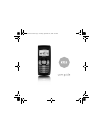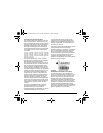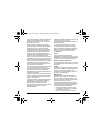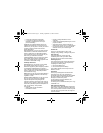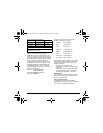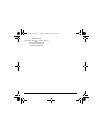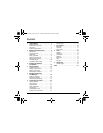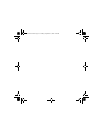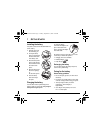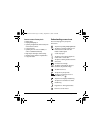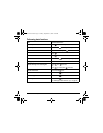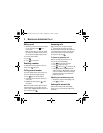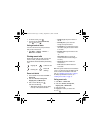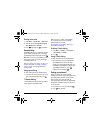
User Guide for the Kyocera K122 Phone iii
The exposure standard for wireless mobile devices
employs a unit of measurement known as the
Specific Absorption Rate, or SAR. The SAR limit
set by Anatel is 2.0 W/kg.*
Tests for SAR are conducted using standard
operating positions specified by the standards of
Anatel, with the phone transmitting at its highest
certified power level, in all frequency bands.
Although the SAR is determined at the highest
certified power level, the actual SAR level of the
phone while operating may be well below the
maximum value. This is because the phone is
designed to operate at multiple power levels, so as
to use only the power required to reach the
network. In general, the closer the telephone is to a
radio base station, the lower the power transmitted.
Before a phone model is available for sale to the
public, it must be tested, approved, and certified by
Anatel that it does not exceed the limit of the
government requirements related to safety in the
event of exposure to interference.
The tests are conducted in positions and locations
(e.g., at the ear and used next to the body)
specified by Anatel for each model. The highest
values of the SAR for this phone model are
described below in accordance with the technical
certificate of compliance.
While there may be differences between the SAR
levels of various phones and at various positions,
they all meet the government requirements with
regard to safe exposure.
Anatel has granted an equipment authorization for
this model phone with all reported SAR levels
evaluated as in compliance with the radio
frequency emission guidelines of Anatel.
SAR information on this model phone is on file with
Anatel and can be found at its web site.
http://www.anatel.gov.br
Additional information on SAR values can be found
on the web site of CTIA (Cellular
Telecommunications and Internet Association), at
http://www.wow-com.com.
* In the United States and Canada, the SAR
limit for mobile phones used by the public is
1.6 watts/kg (W/kg) averaged over one gram of
tissue. The standard incorporates a substantial
margin of safety to give additional protection to
the public, and to account for any variation
in measurement.
Caution
The user is cautioned that changes or
modifications not expressly approved by the party
responsible for compliance could void the warranty
and user’s authority to operate the equipment.
Optimize your phone’s performance
Use the guidelines on <Blue>page 1 to learn how
to optimize the performance and life of your phone
and battery.
Air bags
If you have an air bag, DO NOT place installed or
portable phone equipment or other objects over the
air bag or in the air bag deployment area. If
equipment is not properly installed, you and your
passengers risk serious injury.
Medical devices
Pacemakers—Warning to pacemaker wearers:
Wireless phones, when in the ‘on’ position, have
been shown to interfere with pacemakers. The
phone should be kept at least six (6) inches away
from the pacemaker to reduce risk.
The Health Industry Manufacturers Association
and the wireless technology research community
recommend that you follow these guidelines to
minimize the potential for interference.
• Always keep the phone at least six inches
(15 centimeters) away from your pacemaker
when the phone is turned on.
• Do not carry your phone near your heart.
82-G1675-1EN.book Page iii Tuesday, September 12, 2006 2:50 PM



